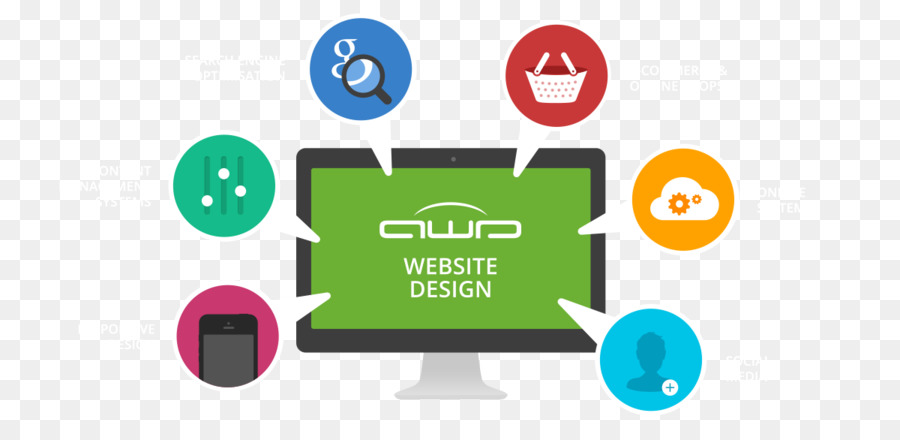Intrigued In Finding Out Just How Site Layout Has Altered Over The Years? Explore The Progression From Fundamental, Simple Layouts To User-Centered Approaches That Prioritize The Requirements And Choices Of On-Line Site Visitors
Intrigued In Finding Out Just How Site Layout Has Altered Over The Years? Explore The Progression From Fundamental, Simple Layouts To User-Centered Approaches That Prioritize The Requirements And Choices Of On-Line Site Visitors
Blog Article
Authored By-Asmussen Bowles
In the past, sites were straightforward and concentrated on details. Navigation was straight, and design was for desktop computers. Currently, user experience is crucial. Data guides designs for simple navigating. Responsive designs match various gadgets. Today, dark setting lowers stress, and minimal food selections improve navigating. Interactive functions engage users, and vibrant visuals stand out. AI assimilation boosts engagement. See how layout has developed to improve your online trip.
Early Days of Website Design
In the very early days of website design, simplicity reigned supreme. Web sites were basic, with limited colors, fonts, and designs. The focus got on giving information as opposed to showy visuals. https://onpageseoservices84062.newbigblog.com/35839410/refine-your-pay-per-click-campaigns-with-high-impact-keyword-research-study-approaches-that-will-revolutionize-your-marketing-game-discover-how accessed the internet through slow-moving dial-up links, so speed and functionality were essential.
Navigation food selections were straightforward, normally situated at the top or side of the web page. Web sites were made for home computer, as mobile browsing wasn't yet prevalent. ada accessibility guidelines websites was king, and designers prioritized very easy readability over intricate layout aspects.
HTML was the key coding language utilized, and developers needed to function within its restraints. Computer animations and interactive attributes were very little contrasted to today's criteria. Web sites were static, with little dynamic material or individualized customer experiences.
Rise of User-Focused Layout
With the development of site design, a change in the direction of user-focused layout concepts has ended up being increasingly noticeable. Today, developing sites that prioritize individual experience is crucial for involving visitors and accomplishing organization goals. User-focused design entails recognizing the needs, choices, and behaviors of your target audience to customize the internet site's layout, web content, and features accordingly.
Designers now perform comprehensive research, such as individual surveys and usability testing, to gather insights and responses directly from customers. This data-driven approach helps in developing instinctive navigation, clear calls-to-action, and aesthetically attractive interfaces that resonate with site visitors. By positioning the user at the center of the style procedure, sites can provide a much more individualized and delightful experience.
Responsive design has also emerged as a key facet of user-focused layout, ensuring that websites are optimized for various tools and screen sizes. This versatility boosts access and use, catering to the diverse means individuals connect with sites today. Essentially, the surge of user-focused design indicates a change towards producing electronic experiences that focus on the needs and assumptions of completion customer.
Modern Trends in Web Design
Discover the current trends shaping web design today. https://beaunhdxu.blogoxo.com/29998615/improve-your-ppc-projects-with-cutting-edge-keyword-study-techniques-that-will-change-your-advertising-method-learn-how is dark mode layout, supplying a streamlined and modern appearance while reducing eye strain in low-light atmospheres. Another vital fad is minimal navigating, streamlining food selections and enhancing individual experience by focusing on essential elements. Including micro-interactions, such as computer animated buttons or scrolling results, can produce a much more appealing and interactive website. Receptive layout stays important, ensuring smooth individual experiences across different gadgets. Additionally, utilizing vibrant typography and asymmetrical formats can add aesthetic rate of interest and accentuate details content.
Integrating AI modern technology, like chatbots for customer support or individualized suggestions, enhances user interaction and streamlines procedures. Accessibility has also come to be a substantial pattern, with designers prioritizing inclusive style techniques to accommodate varied customer needs. Accepting sustainability by maximizing website performance for rate and performance is another arising pattern in web design. Teaming up with customer comments and information analytics to repeat and boost design continuously is crucial for staying pertinent in the ever-evolving electronic landscape. By welcoming these modern trends, you can produce an aesthetically attractive, user-friendly site that resonates with your target market.
Conclusion
As you review the evolution of site design from the very early days to currently, you can see exactly how user-focused style has actually become the driving force behind contemporary fads.
Welcome the trip of adjustment and adjustment in website design, always keeping the individual experience at the leading edge.
Remain current with the current fads and technologies, and never ever quit advancing your strategy to produce visually stunning and easy to use web sites.
Progress, adjust, and create - the future of website design remains in your hands.
